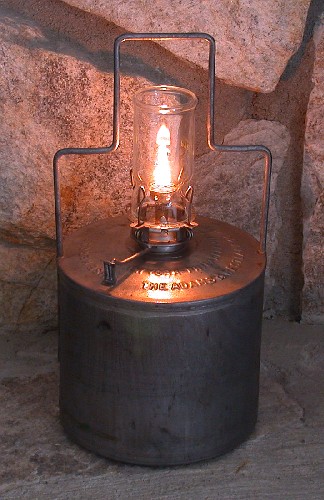

JeffPo's Adlake Bellbottom Switch Lamp Page
Last update: 10/29/07


This is a railroad switch lamp made by the Adlake company. This model differs from my other ones in that it has a bellbottom design. Instead of a mounting socket on the bottom, it has a tube on each side that would fit on a fork that extended from the railroad switch mechanism.

A green signal would let the train engineer know that the railroad switch was set to straight ahead. Although this lens appears aqua blue in natural light, the yellow kerosene powered flame would cause it to glow with a green hue.

An amber signal would let the train engineer know that the railroad switch was set to the siding. Most people are familiar with this lens being red. Some railroads differentiated colors between a switch on the mainline and a switch in the rail yards. Red lenses were used on the mainline while amber lenses such as this one were used in the rail yards.

The fuel fount and burner are what powered the switch lamp. Signal oil or kerosene was use. A railroad worker would inspect the lamps during the day for broken lenses, empty fuel founts, or just flames that had went out.

Nestled deep inside the lamp, the fuel fount and burner became the heart of the switch lamp, giving it life throughout the dark nights.

A train engineer greeted by this glowing amber signal light would know that the switch was set to the siding rail. Perhaps there is a load of empty coal hoppers that need to be dropped off for filling.

A train engineer greeted by this glowing green signal light would know that the switch was set to straight ahead. With a fully loaded consist of railcars; the train might be leaving the rail yard for a far away destination.

While hand lanterns were constantly being swung to and fro to give directions, switch lamps were the communication sentinels of the night. They stood practically stationary, only turning 90 degrees at a time when the switch was changed. Yet the information they silently conveyed allowed nightly rail traffic to safety and efficiently move along the tracks.